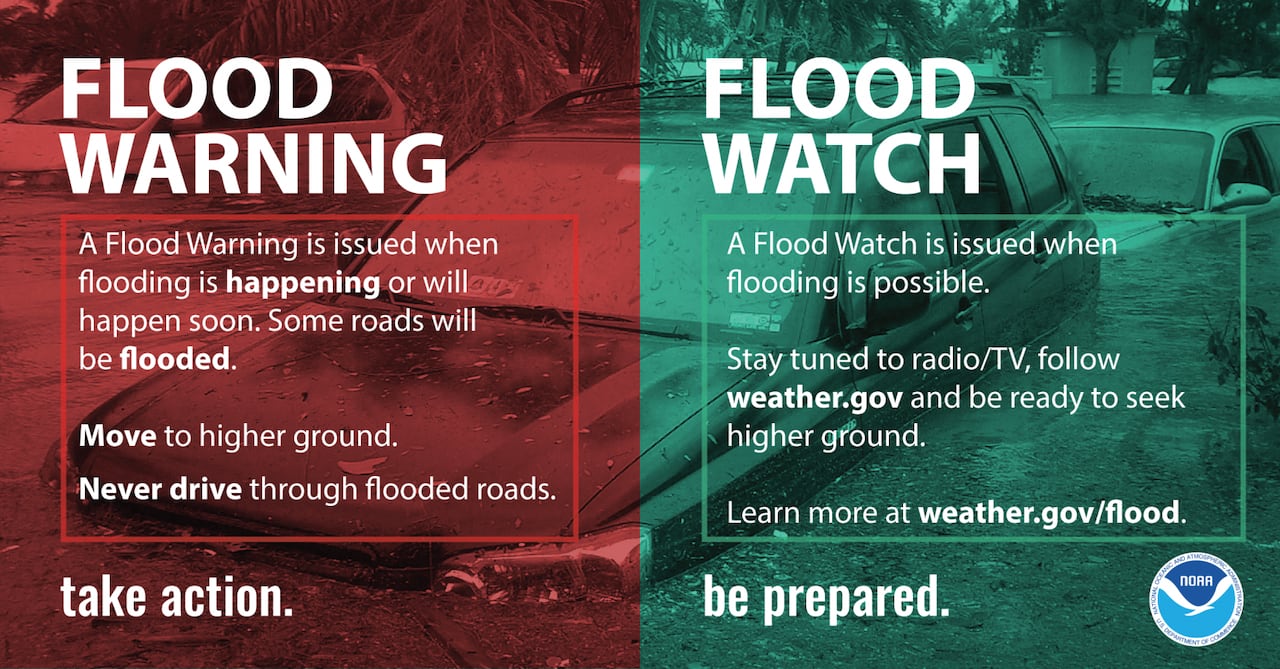Understanding Flood Warnings: NWS Guidance And Safety Precautions

Table of Contents
Decoding National Weather Service (NWS) Flood Warnings
The National Weather Service plays a vital role in protecting communities from the dangers of flooding. They issue various alerts to inform the public about the potential for or occurrence of flooding. Understanding the differences between these warnings is key to taking appropriate action.
-
Flood Watch: A Flood Watch means that conditions are favorable for flooding. It's not a certainty, but it's a strong indication that flooding is possible. The NWS wording might include phrases like, "Flooding is possible… be prepared to take action if flooding develops." This is the time to prepare your home and family, review your emergency plan, and monitor weather updates closely.
-
Flood Warning: A Flood Warning means that flooding is occurring or is imminent. This is a serious alert requiring immediate action. You might see phrasing like, "Flooding is occurring… take action immediately to protect life and property." This warning demands swift action to protect yourself and your belongings.
-
Flood Advisory: A Flood Advisory indicates that minor flooding is possible. While the risk is lower than with a warning, it still warrants attention. The NWS might use wording similar to, "Minor flooding is occurring or is expected… be aware of rising water." Stay informed and be prepared to take action if conditions worsen.
You can find NWS flood warnings through several channels: their official website (weather.gov), mobile apps like the NWS app or other weather apps, local news broadcasts, and NOAA weather radios. Knowing where to access this information is a critical part of preparedness.
Preparing for a Flood: Pre-Flood Safety Checklist
Developing a comprehensive flood preparedness plan is crucial for minimizing risks and ensuring your family's safety. This plan should include:
-
Emergency Kit: Gather essential supplies such as water (one gallon per person per day for at least three days), non-perishable food, medications, first-aid kit, flashlight, batteries, and a portable radio.
-
Evacuation Routes & Safe Locations: Identify multiple evacuation routes from your home and know the location of designated shelters or safe higher ground in your area. Knowing your flood risk zone, which you can find through your local government, is vital.
-
Property Protection: Take steps to protect your property. This includes elevating valuable items, sealing basement windows, and moving important documents to waterproof containers.
-
Communication Plan: Establish a plan for how your family will communicate in case of separation during a flood. This might involve designating a meeting point or using pre-arranged contact numbers.
Remember to include your pets in your evacuation plan; secure them in carriers and have food and water readily available.
During a Flood: Immediate Actions and Safety Measures
When a Flood Warning is issued, immediate action is critical. Your primary goal is to ensure the safety of yourself and your family.
-
Evacuate: If instructed to evacuate by authorities, do so immediately. Don't wait until the water starts rising around your home.
-
Seek Higher Ground: If evacuation is not possible, move to the highest level of your home and stay there.
-
Avoid Floodwaters: Never drive or walk through floodwaters. The depth of the water can be deceiving, and the currents can be incredibly strong, sweeping vehicles and people away. Floodwaters can also contain hazardous materials, making contact dangerous.
-
Turn Off Utilities: If it's safe to do so, turn off the gas, electricity, and water to your home to prevent further damage and risk of electrocution.
Stay informed by listening to local news and emergency broadcasts for updates and instructions.
Post-Flood: Recovery and Safety
Once the floodwaters recede, the recovery process begins. However, post-flood safety is equally important.
-
Assess Damage: Carefully assess the damage to your property, taking photos for insurance claims. Be cautious of structural damage; the foundation of your house may be compromised.
-
Cleanup Safety: Avoid contact with floodwater due to potential contamination. Wear protective gear, including boots, gloves, and a mask, when cleaning up. Properly dispose of contaminated materials.
-
Seek Assistance: Contact FEMA (Federal Emergency Management Agency) or other relevant government agencies for assistance with recovery efforts.
-
Long-Term Health Risks: Be aware of potential long-term health risks associated with floodwater exposure, and seek medical attention if necessary.
Understanding Flood Warnings for Enhanced Safety
Effectively understanding and responding to various levels of NWS flood warnings—Flood Watch, Flood Warning, and Flood Advisory—is critical for your safety and the safety of your community. Preparedness is paramount; having a comprehensive plan in place before a flood event is crucial. Immediate action when a warning is issued is vital, potentially saving lives and minimizing property damage. Share this information with your family, friends, and neighbors to build a safer, more informed community. Learn more about understanding flood warnings and protecting yourself from the devastating effects of flooding by visiting the National Weather Service website.

Featured Posts
-
 Monaco Grand Prix 2025 Your Complete Guide To Viewing Options And Schedules
May 26, 2025
Monaco Grand Prix 2025 Your Complete Guide To Viewing Options And Schedules
May 26, 2025 -
 Atletico Madrid Sevilla Yi 2 1 Yendi Mac Oezeti Ve Analiz
May 26, 2025
Atletico Madrid Sevilla Yi 2 1 Yendi Mac Oezeti Ve Analiz
May 26, 2025 -
 Canli Futbol Atletico Madrid Barcelona Maci Aninda Fanatik Te
May 26, 2025
Canli Futbol Atletico Madrid Barcelona Maci Aninda Fanatik Te
May 26, 2025 -
 Saksikan Aksi Marc Marquez Jadwal Moto Gp Argentina 2025 Trans7
May 26, 2025
Saksikan Aksi Marc Marquez Jadwal Moto Gp Argentina 2025 Trans7
May 26, 2025 -
 Diables Rouges Rtbf Une Dynamique D Equipe Repensee Pour Le Succes
May 26, 2025
Diables Rouges Rtbf Une Dynamique D Equipe Repensee Pour Le Succes
May 26, 2025
